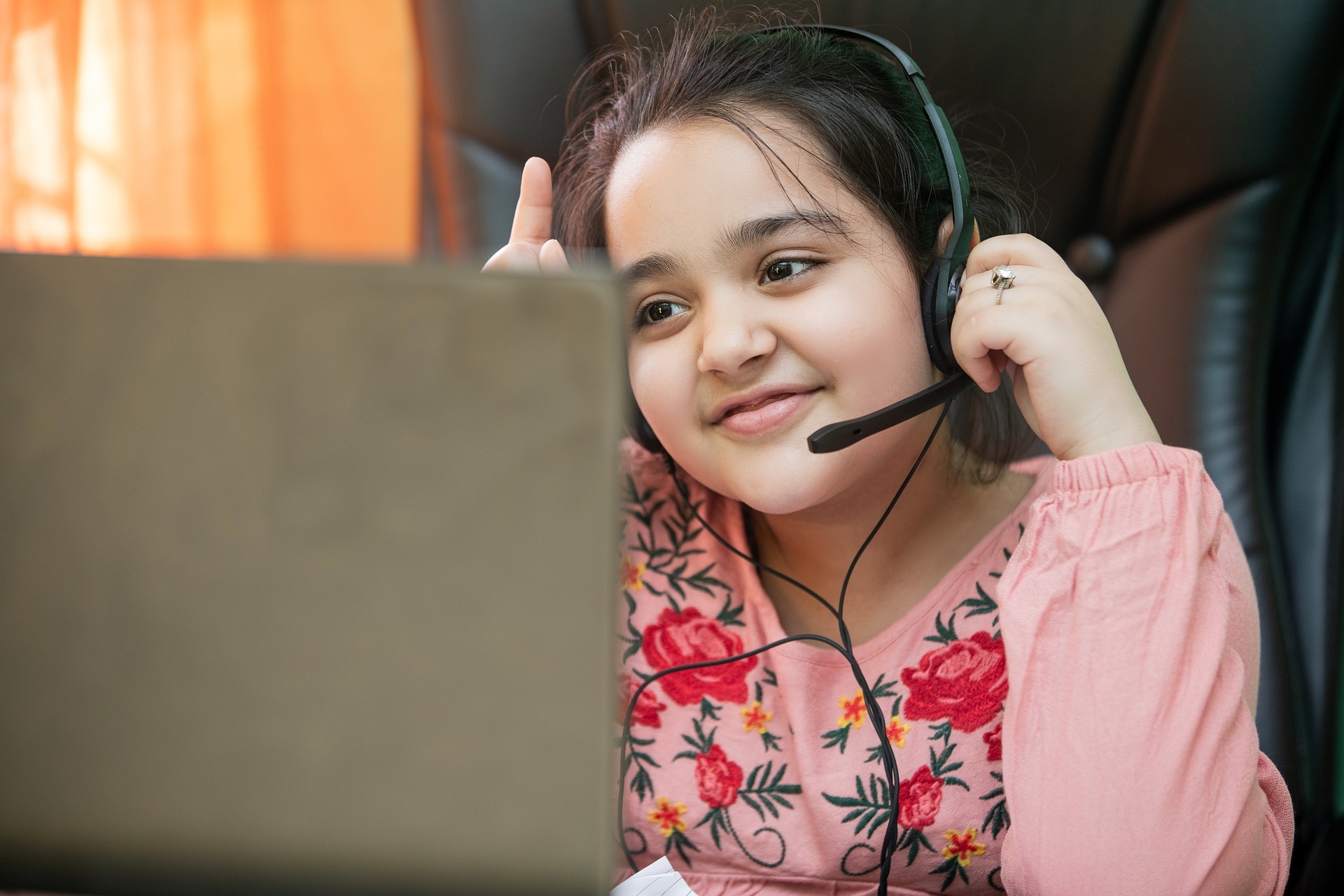The Digital Age
Our current life is linked to many different digital products and technologies. Many processes in our everyday lives are being automated, meetings are often taking place and even schools rely more on online learning environments, especially since the Covid-19 pandemic. Therefore, it is not surprising that we describe our present time as the digital age, which continues to evolve. But we probably don’t realize at first glance that digitalization opens many opportunities for integration and can also help us improve the well-being of students from migrant backgrounds.
Opportunities in Digital Language Education
Digital learning technologies can provide access to learning opportunities for students from migrant backgrounds and stimulate their inclusion (ETUCE, 2018). Digital education can be understood as all technologies that contribute to the implementation of instructional practice. (Institute for Cultural Relations Policy Budapest, 2019)
Digital learning opportunities are multifaceted, especially in foreign language education.
There are many advantages of language teaching in a digital way: pronunciation can be improved by individual technical possibilities. A student can listen to a word or a text as many times as they like and try to repeat it. The student can do so whenever they want, without having to wait for the presence of a teacher. Studies have shown that overall speaking performance can improve significantly when using digital learning methods. (Akkara, Mallampalli & Anumula, 2020) Another advantage is the possibility of creating a worldwide network with peers as well as instructors. This enables information exchange and guarantees an up-to-date status at every stage of learning (UNESCO, 2013). In addition, students do not feel alone and can participate in group learning, so they do not have to sacrifice any of these benefits of non-digital education.
But digitization enables even more than that: by providing digital learning resources, it is up to each student to decide when and what they want to learn. This not only ensures that everyone can work at their own pace, but along the way, it will encourage organizational skills and self-motivation on its own.
This is what our project POEME is about
Our current project POEME addresses these benefits of digital learning and offers students from migrant backgrounds and their teachers the possibility to access learning materials provided digitally. This content is intended to support the learning and teaching of a foreign language and, at the same time, to illustrate the cultural heritage of the host country or other European countries. To be specific,
in the scope of POEME, we created several resources:
- The POEME e-report sets a theoretical framework for all other results of the project, highlighting the value of nonformal teaching methods, the possibilities offered by the use of e-worksheets and e-books and the value of integrating elements of cultural heritage and blended learning exhibitions as pedagogical tools
- The POEME E-worksheets – we created 18 worksheets covering different areas of cultural heritage (tangible, intangible, natural, and digital) and different language levels
- The POEME E-books – we created ten e-books also based on the topics of cultural heritage, and each e-book is presented in three difficulty levels (A1, A2, and B1 based on the CEFR levels)
In addition, we will create an interactive digital guidebook for POEME exhibitions as well as samples of blended learning exhibitions.
Don’t hesitate to check out the project’s website for detailed information and to stay up-to-date on how the project is evolving.
References:
Akkara, S., Mallampalli, M. & Anumula, V. (2020). Improving Second Language Speaking and Pronunciation through Smartphones. International Journal of Interactive Mobile Technologies (iJIM), 14(11), pp.280-287.
ETUCE (2018, September 18). Digital technologies used to integrate migrants in education. ETUCE. https://www.csee-etuce.org/en/news/2723-digital-technologies-used-to-integrate-migrants-in-education
Institute for Cultural Relations Policy Budapest. (2019). Education in the digital age: Through non-formal to digital. Available at: http://culturalrelations.org/Resources/2019/Through_non-formal_to_digital_-_2019.pdf (Accessed on 07 October 2022)
Tang, C.M. & Chaw, L.Y. (2016). Digital Literacy: A Prerequisite for Effective Learning in a Blended Learning Environment? The Electronic Journal of e‐Learning, 14(1), pp.54‐65.
UNESCO (2013). Policy guidelines for mobile learning. Available at: https://unesdoc.unesco.org/ark:/48223/pf0000219641

